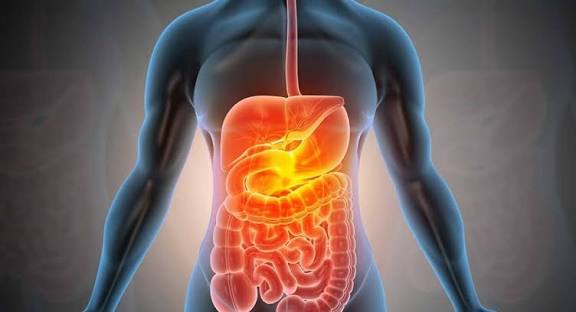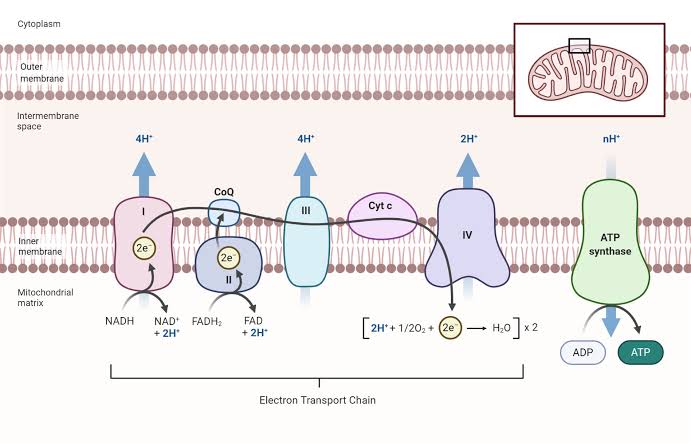
The environment we inhabit is teeming with chemical compounds, many of which are foreign to the human body. These substances, termed xenobiotics, range from life-saving pharmaceuticals to environmental pollutants and dietary components. The human body possesses an sophisticated and vital detoxification system designed to process and eliminate these foreign compounds, preventing their accumulation and potential toxicity. This guide will meticulously describe xenobiotics, elucidate the two primary stages of their biotransformation—Phase I and Phase II reactions—and provide an in-depth understanding of Cytochrome P450, a family of enzymes critical to this process.
Understanding Xenobiotics
The term “xenobiotic” originates from Greek words: “xenos,” meaning foreign, and “bios,” meaning life. In a biological context, a xenobiotic is any substance that is foreign to a living organism and is distinct from its naturally occurring biochemicals. These compounds are not typically produced by the body and, therefore, require specific mechanisms for their handling and elimination.
- Diverse Sources: Xenobiotics encompass a vast array of compounds, including:
- Pharmaceutical Drugs: Medications designed to treat various conditions (e.g., antibiotics, analgesics, antidepressants).
- Environmental Pollutants: Industrial chemicals, pesticides, herbicides, heavy metals, airborne particulates (e.g., PCBs, dioxins, polycyclic aromatic hydrocarbons).
- Food Additives: Preservatives, colorings, flavor enhancers.
- Natural Toxins: Mycotoxins (from fungi), plant toxins, bacterial toxins.
- Lifestyle Chemicals: Components of tobacco smoke, alcohol, burnt food.
- The Challenge: Many xenobiotics are lipophilic (fat-soluble), which means they can readily cross biological membranes and accumulate in fatty tissues. If not transformed, they would persist in the body for extended periods, potentially leading to chronic toxicity, interference with metabolic pathways, or even carcinogenicity. The body’s primary defense mechanism is to convert these lipophilic substances into more hydrophilic (water-soluble) forms that can be easily excreted, primarily via urine or bile. This process is known as biotransformation or metabolism.
The Biotransformation Process – An Overview
Biotransformation is a series of enzymatic reactions that convert xenobiotics into less toxic, more water-soluble metabolites, facilitating their excretion. While every tissue has some metabolic capacity, the liver is the primary organ responsible for xenobiotic biotransformation due to its rich supply of metabolizing enzymes. Other organs involved include the kidneys, lungs, intestines, and skin. This process generally occurs in two sequential phases: Phase I (functionalization) and Phase II (conjugation).
Phase I Reactions – Functionalization for Recognition
Phase I reactions, also known as functionalization reactions, serve to introduce or expose polar functional groups (such as hydroxyl [-OH], amino [-NH2], carboxyl [-COOH], or sulfhydryl [-SH] groups) on the xenobiotic molecule. This addition often makes the compound slightly more polar and provides a “handle” for subsequent Phase II reactions. While Phase I reactions typically decrease the pharmacological activity or toxicity of a compound, it’s crucial to note that some xenobiotics, particularly pro-drugs, are activated in Phase I, or highly reactive, toxic intermediates can be formed (e.g., bioactivation).
The major types of Phase I reactions include:
- Oxidation (Most Common): These reactions involve the addition of oxygen or removal of hydrogen atoms. They are catalyzed by a variety of enzymes, with Cytochrome P450 (CYP) enzymes being the most prominent.
- Hydroxylation: Addition of a hydroxyl group (e.g., aromatic hydroxylation, aliphatic hydroxylation).
- N-dealkylation, O-dealkylation, S-dealkylation: Removal of alkyl groups from nitrogen, oxygen, or sulfur atoms.
- N-oxidation, S-oxidation: Addition of oxygen to nitrogen or sulfur.
- Epoxidation: Formation of an epoxide ring.
- Deamination: Removal of an amino group.
- Other enzymes involved in oxidation include flavin-monooxygenases (FMOs), alcohol dehydrogenases, aldehyde dehydrogenases, and monoamine oxidases (MAOs).
- Reduction: These reactions involve the addition of hydrogen or removal of oxygen atoms. They are less common than oxidation but play a role in metabolizing certain compounds.
- Nitro reduction: Reduction of nitro groups (-NO2) to amino groups (-NH2).
- Azo reduction: Reduction of azo groups (-N=N-).
- Enzymes involved include various reductases found in the endoplasmic reticulum and cytoplasm.
- Hydrolysis: These reactions involve the cleavage of a chemical bond by the addition of water.
- Ester hydrolysis: Cleavage of ester bonds (e.g., breakdown of aspirin).
- Amide hydrolysis: Cleavage of amide bonds.
- Enzymes involved include esterases and amidases, found in plasma, liver, and other tissues.
Phase II Reactions – Conjugation for Excretion
Phase II reactions, also known as conjugation reactions, involve the covalent attachment of small, highly polar, endogenous molecules (conjugates) to the functional groups introduced or exposed during Phase I, or to functional groups already present on the parent xenobiotic. These reactions significantly increase the water solubility and molecular weight of the xenobiotic, rendering it virtually inactive and ready for excretion via urine (renal excretion) or bile (biliary excretion).
The major types of Phase II conjugation reactions and their enzymes are:
- Glucuronidation: This is the most common and important Phase II reaction. It involves the transfer of glucuronic acid (derived from UDP-glucuronic acid) to the xenobiotic.
- Enzyme: UDP-glucuronosyltransferases (UGTs).
- Substrates: Compounds with hydroxyl, carboxyl, amino, or sulfhydryl groups. Examples include bilirubin, paracetamol, and morphine.
- Result: Formation of highly water-soluble glucuronides.
- Sulfation: Involves the transfer of a sulfate group (from 3′-phosphoadenosine-5′-phosphosulfate, PAPS) to the xenobiotic.
- Enzyme: Sulfotransferases (SULTs).
- Substrates: Phenols, alcohols, aromatic amines. Examples include steroids, catecholamines, and some drugs like minoxidil.
- Result: Formation of water-soluble sulfate esters.
- Acetylation: Involves the transfer of an acetyl group (from acetyl-CoA) to compounds containing amino or hydrazine groups.
- Enzyme: N-acetyltransferases (NATs).
- Substrates: Aromatic amines, sulfonamides, hydrazines (e.g., isoniazid, procainamide).
- Result: Can sometimes decrease water solubility, but generally aids in detoxification. Genetic polymorphisms in NATs can lead to “fast” or “slow” acetylators.
- Methylation: Involves the transfer of a methyl group (from S-adenosylmethionine, SAM) to xenobiotics.
- Enzyme: Methyltransferases (e.g., Catechol-O-methyltransferase, COMT; Thiopurine methyltransferase, TPMT).
- Substrates: Catecholamines, phenols, thiols, some nitrogenous compounds.
- Result: Can sometimes decrease water solubility or biological activity; in some cases, it can be an activation step.
- Glutathione Conjugation: Involves the conjugation of the tripeptide glutathione (GSH) to electrophilic compounds. This is a crucial detoxification pathway for reactive intermediates that might otherwise bind to cellular macromolecules and cause toxicity.
- Enzyme: Glutathione S-transferases (GSTs).
- Substrates: Epoxides, halogenated hydrocarbons, organic nitrates, and highly reactive Phase I metabolites.
- Result: Formation of less toxic, water-soluble glutathione conjugates, which can then be further metabolized to mercapturic acids for excretion.
- Amino Acid Conjugation: Involves the conjugation of specific amino acids (glycine, taurine, glutamine) to xenobiotics containing carboxylic acid groups.
- Enzyme: Ligases (e.g., acyl-CoA ligase, N-acyltransferase).
- Substrates: Carboxylic acids (e.g., benzoic acid).
Cytochrome P450 (CYP) – The Master Detoxicifier and Its Clinical Importance
Within the vast enzymatic arsenal of Phase I reactions, the Cytochrome P450 (CYP) superfamily stands out as the most crucial and versatile enzyme system. It is responsible for the metabolism of approximately 75% of all drugs and a wide range of endogenous and exogenous compounds.
5.1. Properties of Cytochrome P450:
- Heme-Containing Monooxygenases: CYPs are a superfamily of heme-containing enzymes. The “P450” refers to their characteristic absorption maximum at 450 nm when reduced and complexed with carbon monoxide, a spectral property due to the heme iron.
- Location: Primarily localized in the endoplasmic reticulum (ER) of liver cells, making them “microsomal enzymes.” They are also found in other tissues, including the intestines, kidneys, lungs, brain, and adrenal glands.
- Enzyme System: They are part of a multi-component enzyme system requiring NADPH (nicotinamide adenine dinucleotide phosphate) and molecular oxygen (O2) for their catalytic activity. The general reaction is: RH + O2 + NADPH + H+ → ROH + H2O + NADP+, where RH is the substrate and ROH is the hydroxylated product.
- Diversity: CYPs represent a large and diverse group of enzymes, organized into families (e.g., CYP1, CYP2, CYP3) and subfamilies (e.g., CYP1A, CYP2D, CYP3A) based on amino acid sequence homology. Individual enzymes are designated by a number (e.g., CYP3A4). Humans express about 57 functional CYP genes.
- Broad Substrate Specificity: While individual CYP enzymes have preferred substrates, they often exhibit broad, overlapping substrate specificities, meaning one enzyme can metabolize multiple compounds, and one compound can be metabolized by multiple CYPs.
- Genetic Polymorphism: Many CYP genes exhibit genetic variations (polymorphisms) within the human population. These variations can lead to significant differences in enzyme activity, affecting how individuals respond to drugs.
5.2. Functions of Cytochrome P450:
- Xenobiotic Metabolism: The primary function of CYP enzymes is the oxidative metabolism of a vast array of xenobiotics, including:
- Drugs: Most prescribed medications (e.g., benzodiazepines, opioids, antidepressants, statins).
- Environmental Chemicals: Pesticides, polycyclic aromatic hydrocarbons (PAHs), industrial solvents.
- Food Components: Flavonoids, caffeine, alcohol.
- Natural Toxins: Aflatoxins, mycotoxins.
- Endogenous Substrate Metabolism: In addition to xenobiotics, CYPs play crucial roles in the metabolism of numerous endogenous compounds vital for physiological functions:
- Steroid Hormone Synthesis and Metabolism: Cholesterol, testosterone, estrogen, cortisol.
- Fatty Acid Metabolism: Including hydroxylation of fatty acids.
- Prostaglandin Synthesis.
- Bile Acid Synthesis.
- Vitamin D Metabolism.
The catalytic cycle involves the binding of the substrate to the active site, reduction of the heme iron, binding of molecular oxygen, a second reduction, and then the cleavage of the oxygen-oxygen bond, leading to the transfer of an oxygen atom to the substrate and release of water.
Clinical Importance of Cytochrome P450:
The central role of CYP enzymes in both xenobiotic and endogenous metabolism makes them incredibly important in pharmacology, toxicology, and clinical medicine.
- Drug Metabolism and Pharmacokinetics:
- Drug Half-Life: CYPs determine how quickly a drug is eliminated from the body, thus influencing its duration of action and dosing frequency.
- Bioavailability: For orally administered drugs, presystemic metabolism by intestinal and liver CYPs can significantly reduce the amount of active drug reaching systemic circulation.
- Prodrug Activation: Many drugs are administered as inactive prodrugs that require CYP-mediated metabolism to be converted into their active therapeutic forms (e.g., codeine to morphine by CYP2D6, clopidogrel to its active metabolite by CYP2C19).
- Pharmacogenetics/Pharmacogenomics:
- Genetic polymorphisms in CYP genes are a major cause of inter-individual variability in drug response and adverse drug reactions.
- Poor Metabolizers (PMs): Individuals with inactive or very low activity CYP alleles. They may experience exaggerated drug effects or toxicity at standard doses due to slow drug clearance.
- Extensive Metabolizers (EMs): Individuals with normal CYP activity. This is the most common phenotype.
- Ultra-Rapid Metabolizers (UMs): Individuals with multiple copies of active CYP genes, leading to increased enzyme activity. They may require higher drug doses to achieve therapeutic effects, or prodrugs may become toxic rapidly.
- Examples: CYP2D6 polymorphisms affect metabolism of antidepressants, antipsychotics, and opioids. CYP2C9 affects warfarin metabolism. CYP2C19 affects clopidogrel and proton pump inhibitors.
- Drug-Drug Interactions (DDIs):
- CYP Inhibition: When one drug (the inhibitor) decreases the metabolic activity of a CYP enzyme, leading to increased plasma concentrations of co-administered drugs metabolized by that same enzyme. This can result in enhanced drug effects or toxicity. Examples: Grapefruit juice (inhibits CYP3A4), ketoconazole, cimetidine.
- CYP Induction: When one drug (the inducer) increases the synthesis or activity of a CYP enzyme. This leads to faster metabolism and reduced plasma concentrations of co-administered drugs, potentially causing therapeutic failure. Examples: Rifampicin, carbamazepine, St. John’s Wort.
- Toxicity and Bioactivation:
- While usually detoxifying, some CYPs can metabolize xenobiotics into highly reactive, toxic intermediates. These intermediates can bind covalently to cellular macromolecules (DNA, proteins, lipids), leading to cell damage, organ toxicity, or even carcinogenicity.
- Example: Paracetamol (acetaminophen) overdose leads to the formation of a toxic intermediate (NAPQI) by CYP2E1, which, if not rapidly detoxified by glutathione, can cause severe liver damage. Similarly, aflatoxin B1 is bioactivated by CYPs to a potent carcinogen.
- Drug Discovery and Development:
- Understanding CYP metabolism is critical during drug discovery and preclinical development. New chemical entities are extensively screened for their susceptibility to CYP metabolism, their potential to inhibit or induce CYPs, and the nature of their metabolites (active, inactive, or toxic).
Conclusion
The metabolism of xenobiotics is a fundamental biological process essential for maintaining cellular and organismal homeostasis. The intricate interplay of Phase I and Phase II reactions, with Cytochrome P450 enzymes at the forefront of Phase I, represents a sophisticated detoxification system. This system ensures that foreign compounds are efficiently converted into excretable forms, minimizing their harmful effects. However, the inherent variability in CYP enzyme activity due to genetic polymorphisms and the potential for drug-drug interactions highlight the immense clinical significance of this system, influencing drug efficacy, safety, and personalized medicine strategies. A comprehensive understanding of xenobiotic metabolism is therefore indispensable for pharmacologists, toxicologists, and healthcare professionals alike.







